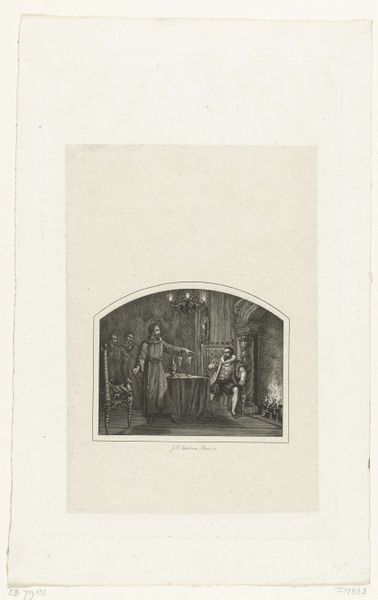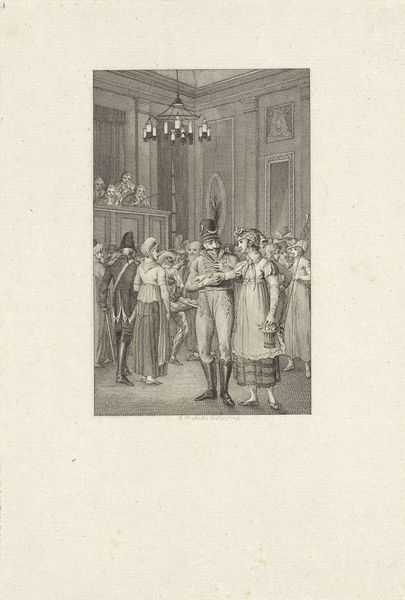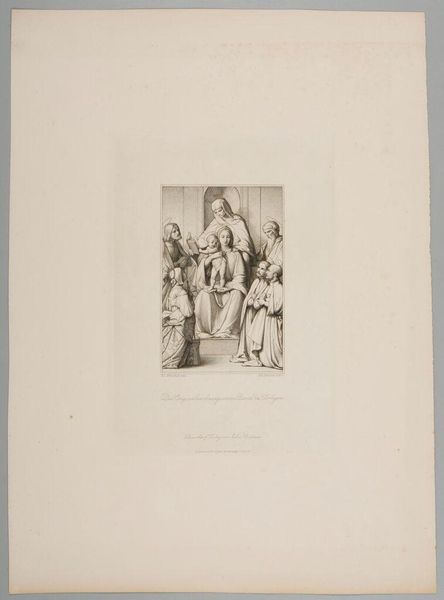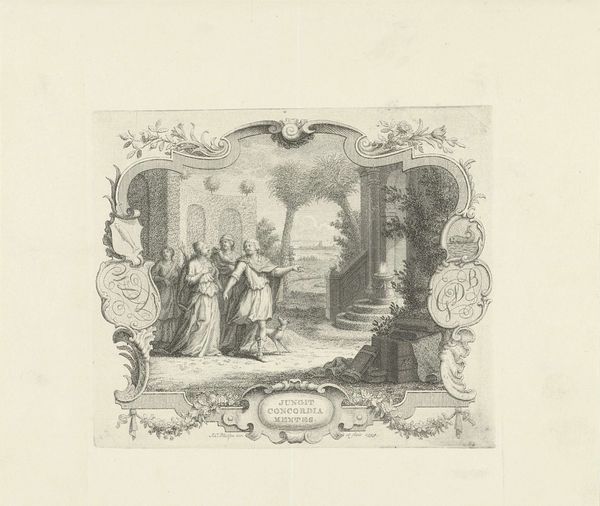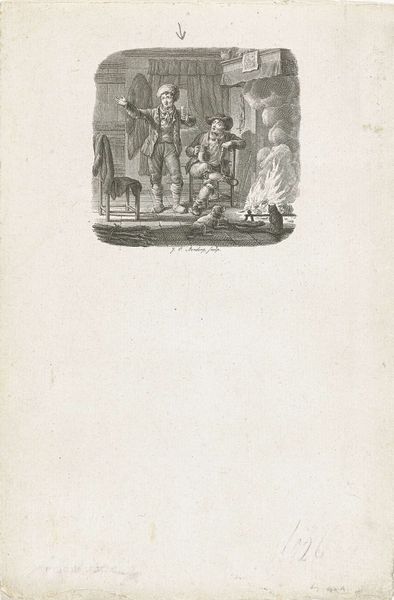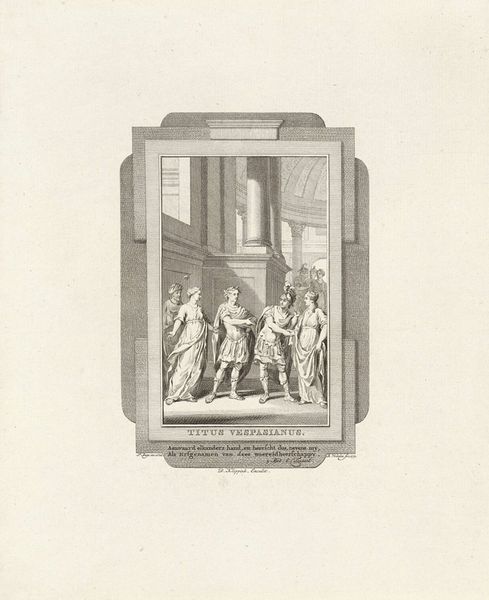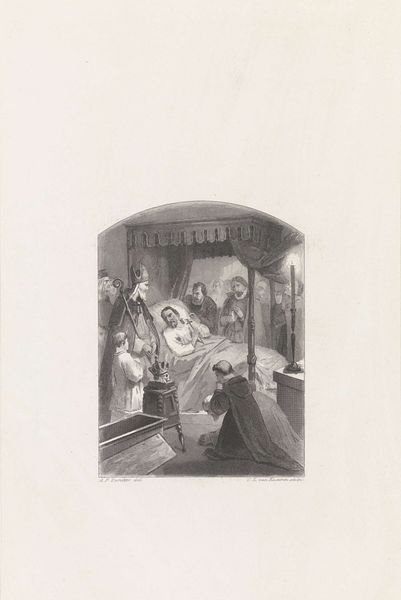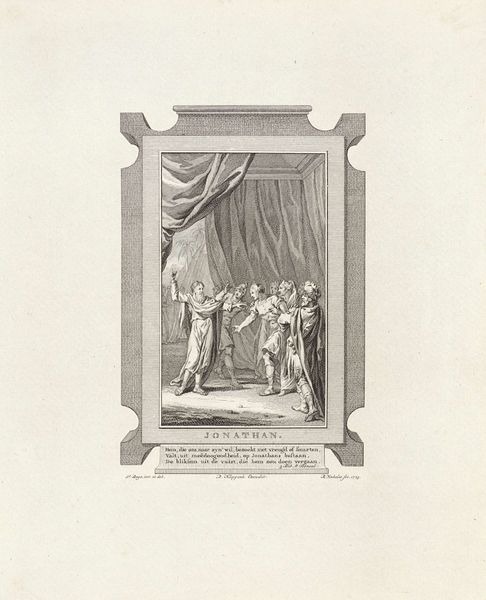
print, engraving
#
neoclacissism
#
narrative-art
# print
#
old engraving style
#
romanticism
#
genre-painting
#
history-painting
#
engraving
Dimensions: height 236 mm, width 150 mm
Copyright: Rijks Museum: Open Domain
Philippus Velijn created this print, depicting a man kneeling before a king in a church, using engraving techniques. Engraving is a meticulous process. The artist uses a tool called a burin to carve lines into a metal plate. This requires immense control and skill, as the depth and spacing of the lines determine the tones and textures of the final image. After the design is complete, ink is applied to the plate, filling the etched lines, and the surface is wiped clean. Then, paper is pressed against the plate, transferring the ink and creating the print. Look closely, and you can see the fine, precise lines that define the figures and architecture. The image has a formal quality, mirroring the solemnity of the scene. The kneeling figure, the regal king, and the elaborate church setting speak to the social hierarchies of the time. By considering the labor-intensive process of engraving, we can appreciate the value placed on skilled craftsmanship in Velijn's era. It reminds us that even seemingly simple images can carry complex social and cultural meanings.
Comments
No comments
Be the first to comment and join the conversation on the ultimate creative platform.
